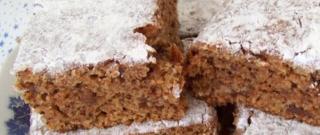A low carb diet focuses on consuming fewer carbohydrates that are mainly found in grains and foods high in sugar. Instead, it suggests consuming more protein, fat and healthy vegetables, and generally be more attentive to what you eat every day.
You should try the low carb diet if you think that your eating habits should be improved and you would like to lose some weight and see the effect of low carb diet on your health. If you don’t know where to start with that, below you will also find a sample one-week low carb meal plan.
Dos and Don’ts of the Low Carb Diet
First, it is important to understand the basic low carb diet rule: to cut down on processed and convenience foods and opt for the products that are more natural. It also goes without saying that you should be careful with the amounts of low carb foods per day if you don’t want to gain weight on a diet. So here is the list of recommended products for a low carb diet:
- Eat: Meat, fish, eggs, vegetables, fruit (in limited amounts), berries, nuts, seeds, high-fat dairy, fats, healthy oils.
- Drink: the list of recommended drinks is short but sufficient: water (including carbonated), coffee, tea, and other beverages provided that they are sugar-free.
- Avoid: Sugar (including soft drinks and juices) and any products containing added sugar, wheat (bread, cereal, pasta), beer, rice, seed oils, starchy vegetables, products labeled as ‘Diet’ and ‘Low-Fat’, highly processed foods and trans fats (these mostly refer to cheap snacks).
- Possible exceptions: If losing weight is not your top priority, it’s possible to sometimes add regular foods to your low carb diet, such as potato-based dishes, unrefined grains, or legumes. Subject to your individual health condition, you may also occasionally allow yourself some dark chocolate (fine, 70% cocoa) and dry wine but within reasonable limits.
Helpful Tips for Living a Low Carb Lifestyle
Here are some things to keep in mind to prepare yourself to the low carb diet:
- Breakfast is not for everyone: Some people just feel fine without having a meal in the morning, so it is fine to skip breakfast. Moreover, you might notice later that you don’t feel hungry often, which is natural for a low-carb diet, so don’t force yourself to eat at certain time of the day, especially in the morning.
- Count on the next day: If you make larger portions of low carb meals, you will not only save time on shopping and cooking, but will be sure to eat healthy next time as well. You may freeze the leftovers to save them for later. A good option is also to pack these leftovers and take them with you for lunch at work.
- Prepare healthy snacks: Grabbing a bite between the meals throughout the day is not that bad for a diet as you may think. You just have to replace usual treats with healthy low-carb snacks, such as veggie sticks, seasonal berries, hard-boiled eggs, baked cheese crisps, or yoghurt (which can be combined with berries or make a dip out of it for veggies). Preparing those snacks in advance will help you resist the temptation of buying something unhealthy.
- Read product ingredient lists carefully: Even on foods labelled as ‘healthy’ or ‘low fat’. Don’t let the marketing tricks fool you. The only trustworthy source of information is the contents and nutrients list.
- Low carb eating out is possible: When dining at a restaurant, it’s still easy to follow a low-carb diet by developing a habit of drinking water instead of soft drinks or juices and choosing vegetable or fish meals from the menu over French fries or pizza.
Start a New Week with this Low Carb Meal Plan
Starting something new is always easier with a plan. Those low-carb recipes included in the meal plan below are both simple and delicious. Feel free to modify this plan according to your personal liking – as long as you follow the dos and don’ts provided above.
Monday:
Omelet with fried vegetables.
Yogurt with raspberries and almonds.
Low-carb cheeseburger served on avocado slices.
Tuesday
Low carb porridge with berries.
Low carb chicken fried with zucchini and sweet pepper.
Salmon with asparagus.
Wednesday
Boiled eggs with avocado and cheese.
Veggie salad with some olive oil and seeds.
Low carb vegetables.
Thursday
Scrambled eggs.
Smoothie with coconut milk, berries, and cashews.
Steak and vegetable salad.
Friday
Classic fried eggs and bacon.
Chicken salad with some olive oil.
Low carb spaghetti made of zucchini.
Saturday
Omelet with various veggies.
Natural yogurt with berries, coconut flakes and walnuts.
Meatballs with veggies.
Sunday
Veggie hash browns.
Blueberry smoothie with coconut milk and seeds.
Salmon steak with vegetables.
As already mentioned, you can expand this plan a little bit with some exceptions like potatoes (and better yet sweet potatoes) or some healthy grains. More low carb recipes can be easily found on the Internet.
Low Carb Shopping Tips
The fundamental rule for all diets applies here too: don’t go shopping without a list. Make your meal plan beforehand and define the food you need to buy. This is the best way to avoid buying unnecessary stuff which is usually not something healthy.
Stay away from sections with unnatural temptations such as chips, chocolate bars, cookies, ice cream, or pastry. Instead, it is better to shop at the perimeter of the supermarket, where you will usually find dairy products, vegetables, and fruit.
Most supermarkets have everything you need to cook low-carb meals. In general, your shopping list should include the following items:
- Meat;
- Fish;
- Eggs;
- Cheese;
- Butter, extra virgin olive oil, sesame or coconut oil;
- High-fat, sugar-free yogurt;
- Berries and nuts;
- Fresh and frozen vegetables;
- Seasonings like sea salt, pepper, etc.
As you see, a low-carb diet is rather easy and can hardly be called ‘diet’ at all. It is mainly about eating more natural food and take care of your health.






